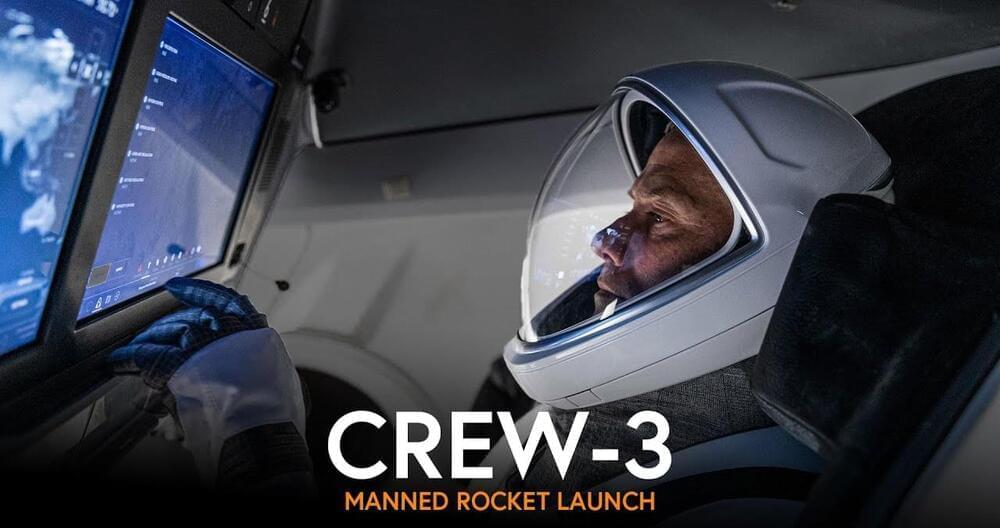Weird flex, but OK.


Weird flex, but OK.

I was the lucky one to get the round number.
A German astronaut is set to become the 600th person to enter space and he will do so flying with a U.S. astronaut who once came close to being number 500.
Matthias Maurer with the European Space Agency (ESA) will gain the distinction of being the sexcentenarian space traveler when he launches to the International Space Station as a member of SpaceX’s Crew-3 mission, currently scheduled for early Sunday morning (Oct. 31). Maurer is one of three first-time fliers on the four-person crew, including NASA astronauts Raja Chari and Kayla Barron, but he was identified by NASA as the designated milestone maker.

Missions on Mars are something you got kind of used to by now. From time to time, some rocket headed to Mars is launched, and this gets in the news for a brief time. At least that’s how most of the people see this. The ones who are more into the field and more curious about the topic know that this is not something we humans casually do. And we don’t do it just for the sake of it. A mission to Mars with the whole package, a rover, and everything, costs about 3 billion dollars. So when we send something to Mars, it’d better bring back something significant.
The mission in preparation right now is called ExoMars, and its rover is planned for launch in 2022.

We might be witnessing the start of the private space station race.
Dare we say that a new type of space race is heating up? Blue Origin, the space tourism firm founded by billionaire Amazon founder Jeff Bezos, announced a partnership with Sierra Space and Boeing to build and launch a commercial space station called Orbital Reef by the end of the decade, a press statement reveals.
If Lockheed Martin and Nanoracks have their way, Orbital Reef won’t be the first commercial orbital outpost in low Earth orbit, as the two firms are collaborating to launch their own station by 2027.


Blue Origin and Sierra Space have revealed plans for Orbital Reef, a commercial space station to be built in low Earth orbit. Check out animation of what it will look like here.


O,.o.
A Canadian aerospace company has chosen an eyebrow-raising name for a hypersonic space plane it plans to launch in 2022: “Sexbomb.”
Space Engine Systems (SES) announced that it wants to launch the, uh, Sexbomb in Manitoba, according to a press release from the company. The vehicle will be used to test the company’s spacecraft engine prototype.
Of course, you might be wondering what’s with the name. Perhaps it was inspired by Tom Jones 0 or maybe the employees are all just huge Scott Pilgrim fans. Or, more realistically, maybe it’s just a grabby name from Elon Musk’s meme marketing playbook.

In an interview with RT, the president of the Russian Federation’s national aerospace agency, Roscosmos, expressed satisfaction with the number of trips performed by the Space Exploration Technologies Corporation’s (SpaceX) Crew Dragon spacecraft to the International Space Station (ISS).
After being developed for the National Aeronautics and Space Administration (NASA), the Dragon recently achieved another historic milestone in aerospace history by ferrying a private crew to an orbit higher than the International Space Station (ISS), which serves as a global space laboratory.
Roscosmos uses Russia’s Soyuz spacecraft for its crewed flights, and it plans to stop its ISS missions by 2024. The station includes components from all over the world, and it will have spent 22 years in orbit in November, having been the only destination for travelers to space.

We’re just 7 days away from the launch of Crew-3 to the ISS!
Mission livestream:
Discord: https://discord.gg/7Szs3Qma.
Become a member to my channel!
https://www.youtube.com/channel/UCn8SmzG1xXx_inu-XADxcMg/join.
SpaceX and NASA are targeting Thursday, April 22 for Falcon 9’s launch of Dragon’s second six-month operational crew mission (Crew-2) to the International Space Station (ISS) from historic Launch Complex 39A (LC-39A) at NASA’s Kennedy Space Center in Florida. The instantaneous launch window opens at 2:21 a.m. EDT…
Following stage separation, Falcon 9’s first stage will land on the “Of Course I Still Love You” droneship, which will be stationed in the Atlantic Ocean.
This is the second human spaceflight mission to fly astronauts on a flight-proven Falcon 9 and Dragon. The Falcon 9 first stage supporting this mission previously launched the Crew-1 mission in November 2,020 and the Dragon spacecraft previously flew Robert Behnken and Douglas Hurley to and from the International Space Station during SpaceX’s Demo-2 mission in 2020.
#CrewDragon #LaunchAmerica